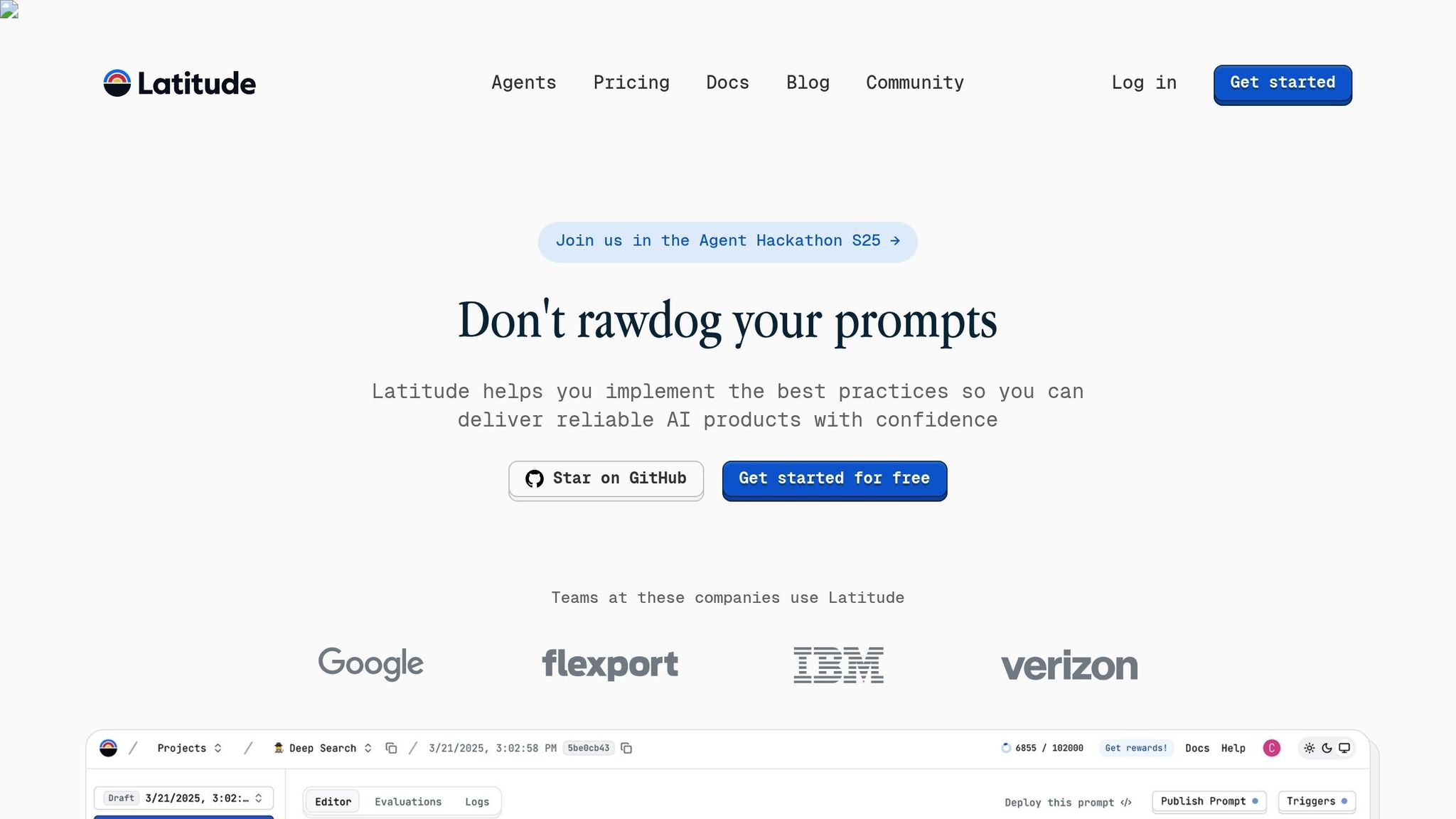Accuracy vs. Precision in Prompt Metrics
Explore the critical differences between accuracy and precision in evaluating LLM prompts, and learn how to balance these metrics for optimal performance.

Want better LLM performance? Start with accuracy and precision.
Accuracy measures how often responses are correct. Precision focuses on how consistent positive responses are. Both are essential for improving prompts and depend on your specific use case.
- Accuracy: Best for balanced tasks where all errors matter equally (e.g., general text classification).
- Precision: Critical when false positives are costly (e.g., content moderation, fraud detection).
Quick Comparison:
| Metric | Focus Area | Best Use Case |
|---|---|---|
| Accuracy | Overall correctness | Balanced tasks with equal error cost |
| Precision | Reliability of positive results | High-stakes tasks like diagnostics |
Use tools like Latitude to track and refine these metrics, balancing trade-offs for optimal performance.
Core Concepts: Accuracy vs. Precision
Accuracy Explained
Accuracy measures how often predictions are correct overall. It considers true positives, true negatives, false positives, and false negatives. To calculate accuracy, divide the number of correct predictions by the total number of predictions.
Precision Explained
Precision zeroes in on the reliability of positive predictions. It tells you how often a positive result is actually correct. This is especially crucial in areas like content moderation or medical diagnostics, where false positives can have serious consequences.
Both metrics play distinct roles and are often used together for a fuller evaluation.
Comparing Accuracy and Precision
Accuracy and precision differ in focus and purpose. While accuracy gives a broader picture of overall performance, precision narrows in on the quality of positive predictions. Here's a side-by-side comparison:
| Aspect | Accuracy | Precision |
|---|---|---|
| Measurement Focus | Overall correctness of predictions | Reliability of positive predictions |
| Use Case Priority | Balancing false positives and negatives | Reducing false positives |
| Calculation Scope | Considers all predictions (TP, TN, FP, FN) | Focuses only on positive predictions |
| Best Application | Balanced datasets with equal error costs | Scenarios where false positives are costly |
Latitude's tools allow teams to monitor these metrics together, uncovering performance trends. By understanding these differences, teams can:
- Choose the right metric for their specific needs
- Set realistic goals for system performance
- Adjust prompts to improve outcomes
- Weigh trade-offs between different error types
The right metric is key to refining your approach and achieving better results.
Choosing Between Accuracy and Precision
Selecting the right metric for evaluating prompts often comes down to understanding the trade-offs between false positives and false negatives for your specific application.
When to Use Accuracy
Accuracy is the go-to metric when you need a clear picture of overall correctness, and when false positives and false negatives carry similar weight. It's particularly useful for tasks where all types of errors are equally important.
For instance, in content classification tasks where large language models (LLMs) sort articles by topic - like "Technology", "Politics", or "Entertainment" - accuracy offers a balanced way to measure performance. Misclassifying a technology article as entertainment is just as impactful as failing to identify a technology article.
| Use Case | Why Accuracy Works Best | Target Accuracy |
|---|---|---|
| General Text Classification | Equal importance of all categories | 85-95% |
| Sentiment Analysis | Balanced detection of positive/negative sentiments | 80-90% |
| Language Detection | Equal cost for all types of misclassifications | 95-99% |
Tools that visualize accuracy trends and errors can help identify areas for improvement. However, while accuracy gives a broad view of performance, some use cases need stricter control over false positives.
When to Use Precision
In more sensitive scenarios, precision takes center stage. This metric is critical when false positives can have serious consequences, and minimizing them is a priority.
Here are some high-stakes applications where precision is key:
-
Content Moderation
False positives, like blocking legitimate posts or comments, can harm user trust. Platforms typically aim for precision rates above 95% to ensure only harmful content is flagged. -
Financial Transaction Analysis
Incorrectly flagging legitimate transactions as fraudulent disrupts customer experience and can hurt business operations. Banks focus on achieving high precision to minimize these errors. -
Medical Diagnostic Assistance
LLMs used in preliminary medical screenings must avoid causing unnecessary stress or procedures. Precision rates of 98% or higher are often required to maintain reliability in healthcare settings.
| Critical Factor | Impact on Precision | Minimum Target |
|---|---|---|
| Legal Compliance | Meeting regulatory standards | 99% |
| User Trust | Protecting platform reputation | 95% |
| Safety Concerns | Reducing risks to users | 98% |
Common Measurement Challenges
When evaluating prompts, precise measurement is crucial for maintaining both accuracy and precision. Let's explore some common challenges you might face.
Balancing Metrics
Improving one metric can often come at the expense of another. For example, adjusting decision thresholds to improve precision might lower overall accuracy for the dataset. The key is to strike a balance based on the specific needs of your application.
Addressing Uneven Data
Uneven data can skew evaluations, with dominant classes inflating overall accuracy. Here are three strategies to tackle this issue:
- Data Rebalancing: Adjust the dataset by oversampling minority classes or undersampling majority ones to create a more balanced training set.
- Weighted Evaluation: Apply class weights to give more importance to underrepresented categories during metric calculations.
- Stratified Sampling: Build test sets that reflect the overall class distribution to ensure evaluations are more reliable.
Dealing with Special Cases
Edge cases and outliers can throw off metric reliability. It's essential to document how these cases are handled and evaluate them separately to gain clearer insights into performance. This underscores the importance of ongoing metric monitoring during prompt engineering.
Metric Optimization in Latitude

Latitude addresses measurement challenges by using collaborative tools to fine-tune metrics effectively. Its open-source platform brings together domain experts and engineers to improve prompt performance for production-level LLMs.
Collaborative Metric Refinement
The platform allows teams to share knowledge and work together to refine prompt strategies. This collaborative approach ensures consistent, high-quality performance as organizations grow and scale their LLM projects. It provides a structured method to maintain top-tier prompt performance across various initiatives.
Summary
Understanding the difference between accuracy and precision is key to improving LLM (Large Language Model) prompt performance. Accuracy refers to how closely an LLM's responses match the desired outcomes, while precision focuses on the consistency and reliability of those responses.
An accurate model provides correct answers, whereas a precise model delivers consistent results - even if some responses aren't entirely correct. The goal is to strike the right balance between these metrics, depending on the specific needs of your use case.
Latitude's platform helps teams fine-tune these metrics by facilitating collaboration between domain experts and engineers.
Key Metrics and When to Focus on Them
| Metric | Focus Area | Best Use Case |
|---|---|---|
| Accuracy | Correctness of responses | Applications requiring critical decisions |
| Precision | Consistency of outputs | Tasks that depend on reliable repetition |
| Combined | Balance of both metrics | Production-ready LLM features |
FAQs
When should I focus on accuracy versus precision in my LLM application?
The choice between prioritizing accuracy or precision depends on the specific goals and requirements of your LLM application.
- Accuracy measures how often the model's output is correct overall. It’s crucial for applications where delivering broadly correct results is more important than fine-tuned consistency, such as summarization or general knowledge queries.
- Precision, on the other hand, evaluates how consistently the model produces correct results within a specific context. This is essential for tasks requiring high consistency, like identifying medical terms in clinical data or detecting specific patterns in a dataset.
Consider the stakes of errors and the importance of consistency in your use case to determine which metric to emphasize for optimal performance.
What challenges arise when balancing accuracy and precision in prompt engineering, and how can they be resolved?
Balancing accuracy (how close outputs are to the correct answer) and precision (how consistent outputs are) in prompt engineering can be tricky. Common challenges include:
- Overfitting prompts: A highly precise prompt might produce consistent but incorrect outputs if it’s too narrowly tailored.
- Ambiguity in prompts: Vague or overly broad prompts can lead to accurate results occasionally but lack precision across outputs.
To address these issues, focus on iterative testing and refinement. Collaborate with domain experts to ensure prompts capture nuanced requirements while maintaining clarity. Tools like Latitude can help streamline this process by enabling effective collaboration and testing to develop robust, production-ready prompts.
How does Latitude help improve accuracy and precision in LLM prompt evaluations?
Latitude streamlines the process of improving accuracy and precision in LLM prompt evaluations by offering tools that make it easy to assess and refine prompts. Users can leverage methods like LLM-as-judge, human-in-the-loop reviews, or ground truth comparisons to evaluate performance effectively.
Additionally, Latitude includes an automated prompt refiner that analyzes evaluation results and suggests improvements, saving time while ensuring high-quality outcomes. These features empower teams to optimize LLM performance with confidence and efficiency.
